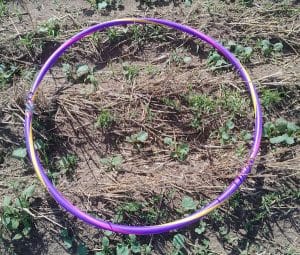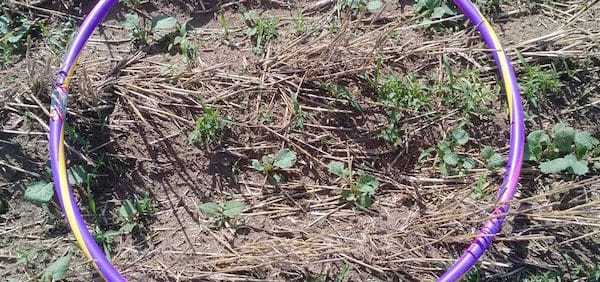Early in-crop weed control is best, but before spraying, scout to see how many weeds are in the field, how big they are and what they are. With any number of weeds present and growing strong, especially if weed stage is ahead of crop stage, the time is right for a herbicide application.
A small number of weeds (even just a few per square foot) emerging before or with the crop can be much more damaging to yield potential than waiting to spray after a larger number of weeds flush out. AAFC weed scientists Neil Harker and John O’Donovan estimated that the yield effect of one weed emerging a week before the crop is equivalent to that of 100 weeds emerging three weeks after the crop.
A thin crop would increase the negative effect of large later flushes. Whether the crop has 2 or 10 plants per square foot, the principles of early weed removal at the one- to 2-leaf stage of the crop still apply. But with the thinner stand, the necessity of a second in-crop application increases because canopy cover will be achieved that much later.

The Canola Council of Canada agronomy team looked at this photo above and discussed whether the field should be sprayed now or in a few days after more weeds have emerged. Consensus was that the field probably should have been sprayed a few days earlier. Angela Brackenreed, who scouted the field, says the weeds just became visible in the past three days, so the crop is actually well ahead of them. She confirmed that the grower plans to spray today as long as conditions allow.
Waiting for more weeds to emerge rarely pays off because it means these early larger weeds have that much more time to get established, making them more difficult to control at in-crop rates.
However, if weeds are few and far between — perhaps due to an effective pre-seed burnoff — waiting to spray is fine.
Nothing replaces good scouting. Scout more than one area of the field. Identify the weeds present and their size. Then refer to the crop protection guide to see which product best manages the weeds and stages present.
CCC agronomy specialist Ian Epp reports on weed scouting at his Canola Watch sentinel field north of Saskatoon:
“The field has many patches of weeds, which is fairly typical. Patches can occur because of differences in topography, crop residue, machinery direction (combines are fantastic weed dispersal machines), field history (old fence line or yard), herbicide misses, herbicide resistance, differences in crop competition (dry hilltops vs. flooded out low areas) and some weed species’ natural dispersal, which is often limited, concentrating seeds in patches. Thorough scouting for weeds is essential in making informed herbicide decisions. Weeds that occur along the field margin or near the approach may not occur throughout the majority of the field. Similarly, the most economically threatening weed(s) may not be present or in great number in easy to scout areas of the field. Scouting should be done across the entire field to get an accurate feel for the distribution, staging and species of weeds present. Take a minimum of 20 weed counts (in one-square-metre areas) per field.
“Scouting takes time so remember to scout for weeds while checking for flea beetles and crop emergence. Because we have the option of a second herbicide pass in canola, it is also important to scout after a herbicide application to check efficacy and to check if a later flush of weeds has occurred.”
Further reading:
For more on scouting, read page 37 of the Saskatchewan/Manitoba crop protection guide
Does your canola field need a second in-crop herbicide application?
